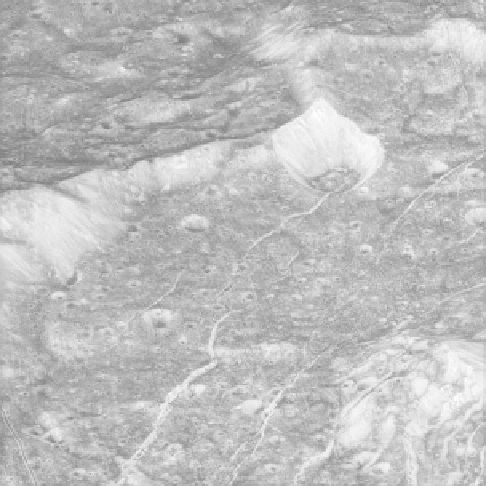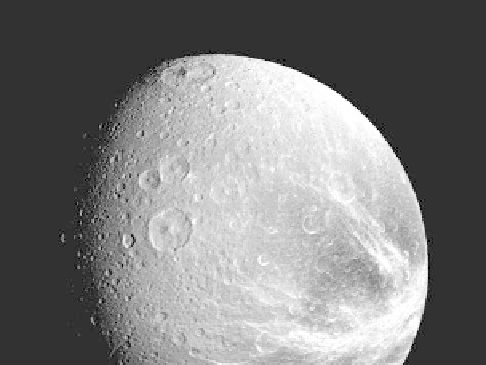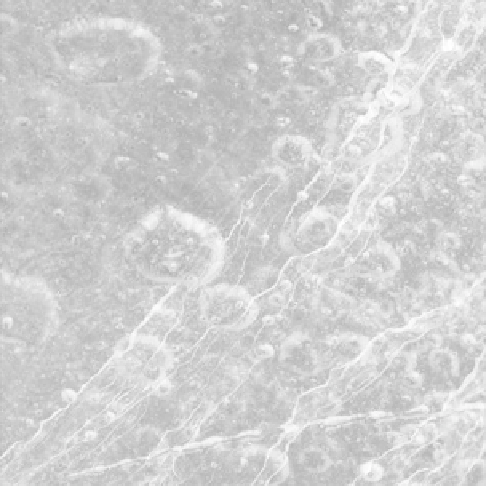Geology Reference
In-Depth Information
Figure 9.31. A high-resolution view of the interior of a 60 km impact
crater on Dione, showing its inner wall (left) and central peak (lower
right); the bright slopes are fresh ice exposed by mass wasting. Also
seen are
fine fractures cutting across the crater
floor (Cassini NASA
PIA07748).
Figure 9.33. Cratered terrain on Dione; the walls and fractures
exhibit bright slopes that result frommass wasting and the exposure
of fresh ice, as seen here in the Carthage Linea region (NASA Cassini
PIA07638).
First seen on Voyager images, these markings were
thought to be frost, perhaps deposited by explosive
releases of gas from the interior through fractures in the
crust. Cassini images now show that they are tectonic
fractures (
Fig. 9.33
), the cliffs of which are very bright,
indicative of exposures of fresh ice.
9.7.4 Rhea
At 1,528 km in diameter, Rhea (
Fig. 9.34
) is the largest of
the intermediate-size satellites of Saturn, second in size
only to Titan. Like Dione, its trailing hemisphere is dark
and has bright wispy markings that are fresh ice exposed
on fracture walls (
Fig. 9.35
). Parts of Rhea
'
s surface are
dominated by large, degraded craters and resemble the
lunar highlands. Many of the craters show the
”
resulting from viscous relation, but not to the same degree
as those of Ganymede.
Rhea
'
is density suggests that it is about three-quarters
water and one-quarter rocky material, but there is sub-
stantial debate as to whether Rhea is differentiated
because there is disagreement on the available geophys-
ical data. However, Peter Thomas et al.(
2007
) argued that
the triaxial shape of this moon probably means that it is a
homogeneous (undifferentiated) body. Thus, the observed
fractures would have resulted from tectonic deformation
“
“flattening”
Figure 9.32. This view of Dione is centered approximately on the
sub-Saturn hemisphere, showing heavily cratered terrain (left) and
smoother plains that have a lower frequency of superposed craters,
re
ecting the relative youth of the surface; this area shows bright
wispy albedo patterns, some of which are bright rays of ejecta but
most of which are scarps along fractures (NASA Cassini PIA01366).
The trailing hemisphere of Dione shows a network of
bright, wispy streaks on a dark background (
Fig. 9.32
).
The streaks, however, do not resemble the typical bright
rays found with impact craters but follow irregular paths.





